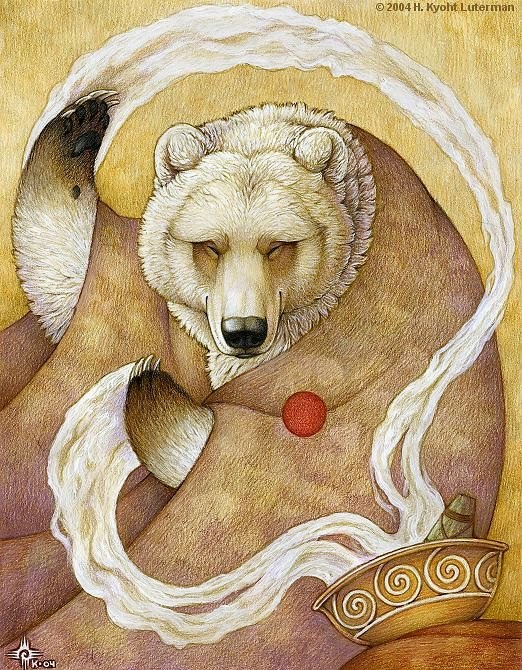Search This Blog
Monday, January 4, 2016
The Burden Basket
The Burden Basket teaches us not to leave our troubles at the door of another. If we rely on ourselves and our connection to the Great Spirit we learn to stretch into our own unique potential. If we become confused and we seek counsel, we should always use the advice given. We should not waste the time of others if we do not intend to respect and honor the wisdom given to us. We should also know that it is not our job to solve the problems of others. In doing so, we rob them of their right to self-reliance.
While we walk through our lifetime, we only carry the burdens we wish to carry. If we find pleasure or a feeling of importance because we have so much to handle, then we need to look seriously at our ideas of self-importance. The lesson of the Burden Basket is that we are all self-reliant and should use our own talents to find our own solutions.
Before the First People were forced onto reservations, Burden Baskets were used to gather wood by the women of the tribes. This wood would be used for cooking fires and Grandmother Fires to heat the inside of the lodges. The heating fires were so named because the wood was small enough that even a Grandmother could carry it. The wood was placed in the Burden Basket to free the hands to gather and collect items for cooking.
Native women were not asked to bear a burden heavier than their Burden Basket could handle. When not in use, the Burden Basket was hung outside of the home to serve another purpose. Native American etiquette differs from other cultures and the Burden Basket played a role in a custom honored by all Tribal members.
Before entering the home, all burdens were to be placed in the Burden Basket outside. Leave your complaints and problems outside, please. It is not polite to bring those troubles into the Sacred Space of the family you are visiting. The Burden Basket becomes a symbol of the internal strength of knowing how to keep your own counsel and not to inflict our burdens onto the shoulders of others.
It takes a strong heart to feel compassion for the burdens of others and not to take the burdens on as our own.
Burden Baskets were used for utilitarian means but also as a Guardian of the homes. Giving balance to the tribe as a whole and a reminder of respecting the happiness and privacy of those around us.
Tweets from https://twitter.com/UnifiKshuNaShun/lists/tweets-for-blogs
Monday, December 21, 2015
Friday, December 18, 2015
Native American Holidays and Traditions
There are several Native American holidays and traditional festivals. Most tribes have their own individual celebrations, but many of the holidays have common themes or purposes. Native American holidays often celebrate nature, the spiritual world or ancestors. Popular holidays might honor the sun, the rain or crops needed to sustain life. Many Native American holidays stretch for a week, rather than just one day.
The start of the new year is honored by some Native Americans, although many tribes have selected different dates as the last day of the year. The Hopi and the Zuni both celebrate a new year's celebration on 22 December. This ceremony is called Soyal, and it is a time of renewal and purification. A ritual is conducted to welcome the sun back after winter.
The Makahiki new year festival is celebrated in Hawaii in October. It celebrates new beginnings and honors the Hawaiian god Lono, who represents fertility, music and rain. There are three phases of Makahiki. The first consists of purification and spiritual cleansing. During the second phase, the Native Hawaiians celebrate with ula dancing and athletic competitions. The final phase honors Lono and tests the tribe's current chief to ensure he is still worthy as a leader.
The Tewa Native Americans celebrate three dances throughout the year honoring a different animal each time. The year begins with a turtle dance, which remembers and honors the day of creation. For three days in October, the Tewa celebrate with the deer dance. This dance represents both femininity and masculinity. The next month, the buffalo is recognized, and the Tewa see this as a time of healing and life.
Native American holidays often celebrate the sun as a life-giving power, both physically and spiritually. The Inca called their sun god Inti, and they celebrated him during the Inti Raymi. This festival traditionally begins on 21 June, the southern hemisphere's winter solstice. The celebrations consist of elaborate dances and the wearing of many bright colors. Originally, animal sacrifices were offered in hopes of an abundant year.
Subscribe to:
Posts (Atom)



